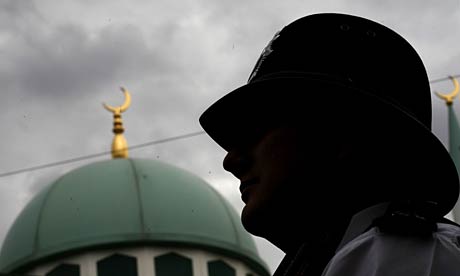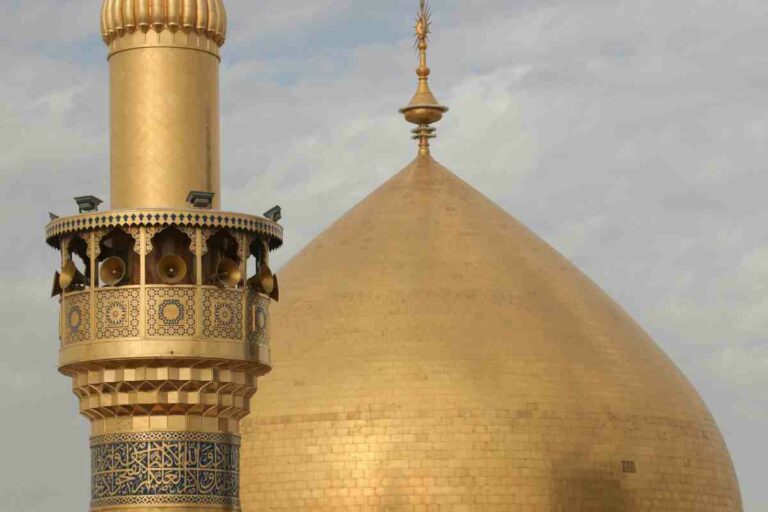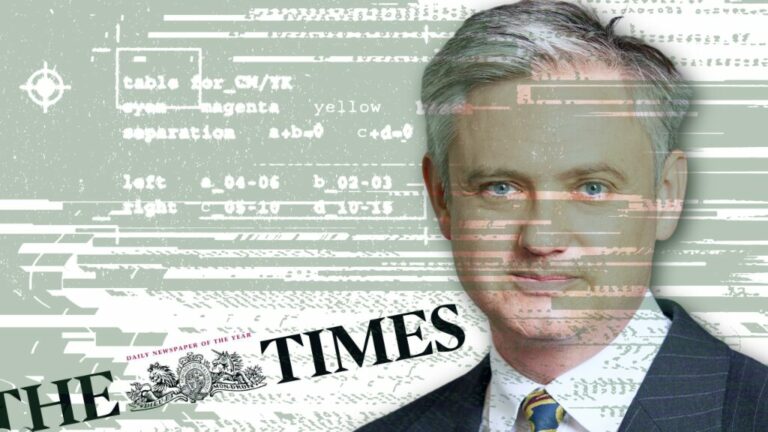Preventing Violent Extremism
Response by the Islamic Human Rights Commission
To UK Government Consultation, September 2009
Summary
Background
Critique
Summary
- The Prevent strategy is doomed to fail in its objectives of preventing violent extremism unless and until it solves a number of inherent flaws
- Firstly, its entire premise is that all Muslims are potential terrorists. Such an Islamophobic assumption serves to legitimise and validate the views of the Far Right and other Islamophobes.
- Secondly, the Prevent agenda unhelpfully conflates the issues of community cohesion and community services delivery with issues of intelligence gathering and counter-terrorism. By doing so, the Government adopts a position that the British Muslim community can only be viewed through the single prism of counter-terrorism efforts
- Thirdly, the Prevent strategy fails to sufficiently engage with the primary motivations behind the actions of terrorists – an unjust and oppressive foreign policy and instead, it focuses on periphery, if not irrelevant, issues of democratic participation, education, and the role of women in the community.
- Fourthly, the Prevent strategy documents fail to define emotive and loaded terms such as “violent extremism”, “extremism”, and “radicalisation”. Such failures when coupled with intensive pressure on local authorities to produce results of projects designed to have tackled these concepts, have resulted in these concepts being defined at the whim of individuals within councils, with their biases, prejudices and lack of understanding. This has manifested itself in a McCarthyite spying culture being implemented in councils, university campuses and even primary schools, as part of the mainstreaming of Prevent.
- Fifthly, the terminology of “violent extremism” completely ignores the very real and dangerous threats and actions by Far Right groups and racist and Islamophobic individuals, whose violent extremism is of rapidly growing concern to all communities.
- Finally, the Government’s efforts to create an alternative narrative to the Al-Qaeda brand have in essence been a cynical experiment in social engineering. Through its creation, promotion and financing of new organisations, who have no connection to the majority of Muslims and whose beliefs and practices contradict core teachings of Islam itself, the Government has further isolated the vast majority of Muslims in the UK, who are clearly not taken in by such tactics.
Background
- On 5 April 2007, in a document entitled ‘Preventing violent extremism – Winning hearts and minds’, Ruth Kelly, Secretary of State for Communities & Local Government (CLG), announced a “new action plan to step-up work with Muslim communities to isolate, prevent and defeat violent extremism”.(i)
- As part of this agenda, a Home Office fund for community cohesion, in place since the Northern cities disturbances of Summer 2001, was transformed into a Preventing Violent Extremism ‘Pathfinder fund’. The 2007/8 PVE Pathfinder Fund delivered £6m in funding to around 70 local authorities to work with partners and communities to deliver a community-based response to violent extremism.
- Eligibility for the fund was based on concentrations of Muslim population with 5% or more and funding was distributed according to an assessment carried out by CLG of the need and ambition of the proposals brought forward.
- In June 2008, the Home Office decided to mainstream the Prevent agenda and announced the availability of £45 million in new funding to “local authorities, schools, community groups and police to tackle violent extremism.(ii)”
Critique - There are a number of problems with the current Prevent strategy which, unless remedied, will ultimately lead to its complete failure, counter-productive results, and a waste of the taxpayer’s money.
- Firstly, the entire premise for the strategy is the incorrect and Islamophobic assumption that every member of the Muslim community is a potential terrorist who needs to be reprogrammed to renounce terrorism and violent extremism. In doing so, it legitimises and validates the negative stereotypes propagated by Far Right and Islamophobic groups that Islam and Muslims are synonymous with terrorism. This in turn can lead to even further marginalisation and isolation of the Muslim community.
- Secondly, the Prevent agenda unhelpfully conflates the issues of community cohesion and community services delivery with issues of intelligence gathering and counter-terrorism. By doing so, the Government adopts a position that the British Muslim community can only be viewed through the single prism of counter-terrorism efforts.
- There is no evidence to link areas that have a high proportion of Muslim inhabitants with terrorism. In their book ‘Sleepwalking to Segregation?’ Challenging Myths About Race and Migration (pp.107-8), Nissa Finney and Ludi Simpson analyse the data for the districts of origin of Muslims charged with terrorist offences. They write:”If ‘segregated areas’, where there are the largest concentrations of Muslims, were hotbeds of terrorism … then one would expect more to be charged in these areas. Seventeen of those charged in the period August 2004 to October 2006 were residents of Bradford, Luton, Newham or Wandsworth, four of the seven most Muslim districts where 18% of the population is Muslim. But just as many lived in other areas; for example, 16 lived in districts with on average only 1% Muslims, coming from Breckland in Norfolk, Doncaster, Bournemouth, Reigate in Surrey, Bexley, Brighton and Hove, Aylesbury Vale and Greenwich. The only set of districts where more Muslims were charged than others was those with the second-lowest concentrations, including Crawley, Lambeth, Wycombe and Manchester. So, Muslims living in highest concentration Muslim areas are not more likely to be terrorists than Muslims living in any other type of area. There is no reason to link particular levels of concentration with terrorism.”
- Thirdly, the Prevent strategy fails to sufficiently engage with the primary motivations behind the actions of terrorists – an unjust and oppressive foreign policy which has caused and continues to cause immense suffering throughout the Muslim world. Instead, it focuses on periphery, if not irrelevant, issues of democratic participation, education, and the role of women in the community.
- Fourthly, the Prevent strategy documents fail to define emotive and loaded terms such as “violent extremism”, “extremism”, and “radicalisation”. When coupled with intensive pressure on local authorities to hit targets, such failures to define have resulted in these concepts being defined at the whim of individuals within councils, with their biases, prejudices and lack of understanding.
- The matter has been further complicated by indications as to what is unacceptable behaviour but not definitively “violent extremism”. For example, in a speech at the London School of Economics, former Secretary of State for CLG Hazel Blears included the following behaviour as unacceptable aspects of Islam:“A belief in the supremacy of the Muslim people, in a divine duty to bring the world under the control of hegemonic Islam, in the establishment of a theocratic Caliphate, and in the undemocratic imposition of theocratic law on whole societies.”(iii)
- In February 2009, a draft version of Contest 2 leaked to the press proposed labeling as “extremist” anyone who advocated a caliphate of Muslim nations, promoted Sharia’ah law, believed in jihad or armed resistance anywhere in the world, including Palestinian armed resistance against the Israeli military, argued that Islam prohibits homosexuality and that it is a sin against Allah, and failed to condemn the killing of British soldiers in Iraq and Afghanistan. Although the final Contest 2 document did not include any such specific definition, the hysteria created by the leaked report was enough to flag up what local authorities should be looking out for.
- Essentially, in its efforts to “stop people becoming terrorists”, the Government has effectively criminalised all forms of political opinion, expression and involvement by Muslims. This has manifested itself in a McCarthyite spying culture being implemented in councils, university campuses and even primary schools, as part of the mainstreaming of Prevent.
- One example of this is the Government’s toolkit for schools entitled ‘Learning together to be safe’ which provides guidelines to schools on preventing violent extremism, by which teachers are expected to report any child they suspect of harbouring extremist views. Within these guidelines are included advice from the Quilliam Foundation about danger signs which teachers should look out for including “Political ideology — use of political propaganda that describes political systems and countries as ‘Kufr’ or anti-Islamic, and expressing the need to replace them with ‘The Islamic system’, or Caliphate…’ Suspended morality…; Conspiratorial mindset and ‘westophobia’…Ultra conservative outlook…” As the An-Nisa Society has stated, such advice is highly simplistic and subjective and raises a number of questions:
• “What are the ‘appropriate mechanisms?’
• What will happen to a child identified as a ‘potential terrorist’?
• Where are the Muslim voluntary sector agencies that will ensure that the child is dealt with appropriately?
• What safeguards are there to ensure that a child or young person is not wrongly labelled for life?
• Who will make these agencies and schools accountable?
• Where are the Muslim voluntary sector support services that can help Muslim families placed in such a situation with, for example, counselling, advocacy and legal help and so on?”(vi) - As part of its strategy, the Government has used a quantitative measure of ‘resilience’ to so-called violent extremism – termed National Indicator 35 (NI 35). This is an assessment framework that evaluates the effectiveness of Prevent related work programmes. Local authorities were asked to sign up to these performance indicators which would assess and measure how well they were tackling extremism. However there was and continues to be much resistance and concern. Some local authorities have resented this reporting requirement, because it makes them an arm of the police or of the security.
- According to the LGA Office Holders, “The Home Office (HO), via the Office for Security and Counter Terrorism (OSCT), have produced a ‘heat map’ which identifies 30 areas with a high risk of producing violent extremists and are seeking a good take-up of NI: 35 across this group. Around nineteen areas across the country have indicated that they will pick up the indicator in their priority 35 set. The HO believe that local authorities that do not select NI:35 are not prioritising PVE and concluding that little or no PVE work is being undertaken. To persuade local authorities to select NI:35, the HO is applying pressure via the Police, and senior officials during LAA (Local Area Agreements) negotiations which has had only limited success… Local authorities are reluctant to pick up the indicator because the term “violent extremism” could alienate communities, undermining cohesion work and are extremely cautious about making public statements around PVE. There is also concern about the measurability of the indicator.”(vii)
- The Chief Executive of Bradford Council and leader of the Conservative Group Kris Hopkins too raised his disquiet with the PVE campaign when responding to questions from Channel 4 reporter Darsha Soni (10th September 2008) and stated:“What they said was that if we were willing to go out and monitor the Muslim community and use the resources of the local council to do that they would release an amount of money to us. The local council should be there to promote education, caring for elderly people, making sure they are in a safe place and not become a wing of the security services.”(viii)
- When asked what the Government’s response was to his statement that he was not prepared to sign up to NI35, Hopkins replied that a whole procession of people, both officers and politicians, had come to Bradford to tell them that they were “soft on terrorism.”
- In June 2009, Reading Conservative councilor Jamie Chowdhary said of NI 35: “If ever a document qualified for the charge of inciting racial hatred, then this is it.” He said it would “isolate, stigmatise and alienate one community, my community”.
- Fifthly, the terminology of “violent extremism” completely ignores the very real and dangerous threats and actions by Far Right groups and racist and Islamophobic individuals, whose violent extremism is of rapidly growing concern to all communities.
- Since the election of BNP leader Nick Griffin to the European Parliament and his comments to Channel 4 News describing Islam as a “cancer” that needed to be removed from Europe by “chemotherapy”(ix) , the threats and actions of Far Right extremists against Muslims has rapidly escalated in both in frequency and severity. Numerous mosques, Islamic centres and even the Glasgow office of the Islamic Relief office have been subjected to arson attacks. In Loughton, Essex, where the BNP has been advocating a ‘No Mosques in Loughton’ campaign, community leader Noor Ramjanally’s home was torched, his family threatened before he was abducted at knife-point. In South London, there has been a spate of attacks against Muslims outside mosques during Ramadan, one of which resulted in the murder of a 65 year old man.
- The last six months has seen a growing number of virulently anti-Islam marches and demonstrations organised by Far Right such as the English Defence League (EDL) and Casuals United. The demonstrations, in which fascists have chanted ‘We hate Muslims’ and ‘No more mosques’, have been allowed proceed in areas with high Muslim populations such as Luton and Birmingham. During a march in Luton, fascists attacked and vandalized the homes, businesses and property of the Muslim population in scenes reminiscent of Mosleys Brownshirts in the 1930s. Rather than crackdown on such blatant fascism, the attitude of the government has been one of silent acquiescence.
- Beyond demonstrations, Far Right extremists are plotting deadlier attacks against Muslims. Numerous terrorist plots have been foiled this year including one in July when an international network of Far Right extremists with access to 300 weapons and 80 bombs was uncovered by counter-terrorism detectives in what was described as the “largest seizure of a suspected terrorist arsenal since the IRA mainland bombings of the early 1990s.” In another recent case not linked to those arrests, detectives seized maps and plans of mosques from the homes of suspected Far Right supporters.
- Most recently, white supremacist Neil Lewington was convicted of planning a terrorist bombing campaign against those he considered non-British. In a raid on his home, police discovered what was described as a “bomb-making factory” as well as racist propaganda and videos of neo-Nazi terrorists.
- Earlier in April, Neil MacGregor was convicted after admitting to threatening to blow up Scotland’s biggest mosque and to behead one Muslim a week until every mosque in Scotland was shut down. Curiously, MacGregor was never charged under any anti-terrorism legislation or tried in the High Court as would be expected. Instead, he was charged and tried with mere breach of the peace in the Glasgow Sherriff Court where he was sentenced to only three years’ probation. One need not ask the inevitable question, ‘what if he had been a Muslim?’ For several cases in recent years have answered that question – draconian sentences of between 8 and 40 years splashed on the front pages of all print media with 24/7 coverage of the perpetrator’s background, his family, his community, and his religion.
- This growing threat to Muslims and other ethnic communities led to Commander Shaun Sawyer of Scotland Yard’s counterterrorism command telling a public meeting of Muslims in July that the police feared a “spectacular” terrorist attack by the Far Right extremists designed to kill and to stoke racial tensions. Sawyer added that more of his officers needed to be deployed to try to thwart neo-Nazi-inspired violence. Senior counter terrorism sources also admitted that the Counter Terrorism Unit in Leeds was currently investigating “just as many” far right plots as al-Qaeda conspiracies.
- If Prevent is sincere about dealing with violent extremism, it must tackle this growing menace to society.
- Finally, the Government’s efforts to create an alternative narrative to the Al-Qaeda brand have in essence been a cynical experiment in social engineering. Through its creation, promotion and financing of new organisations, who have no connection to the majority of Muslims and whose beliefs and practices contradict core teachings of Islam itself, the Government has further isolated the vast majority of Muslims in the UK, who are clearly not taken in by such tactics.
- In its document, ‘Preventing Violent Extremism – Winning hearts and minds’, it unequivocally stated that “It is not for Government to intervene in theological debates. But there is a role for Government in providing support where it is sought or needed. We will support the development of strong faith institutions and leaders capable of engaging effectively with all members of Muslim communities”.(x)
- Since the launch of the Prevent strategy, the exact opposite has been the case and the Government has made every effort to intervene, directly or indirectly, in theological debates and discussions central to the Islamic faith. It has in particular sought to marginalise those Muslims who are vociferous in their political beliefs and instead embarked on a mission to create, promote and fund groups whose version of Islam is more in tune with the Government’s own beliefs. These groups hailed as the true representatives of the Muslim communities include the Sufi Muslim Council (who did not exist prior to their launch by Ruth Kelly in the Houses of Parliament in July 2006), the British Muslim Forum (BMF), and the Quilliam Foundation. All have received and continue to receive the highest amount of funding(xi) to promote their version of Islam which advocate supporting the Government’s domestic and foreign policies without dissent.(xii) The Quilliam Foundation in particular fails to attract more than a miniscule number of supporters and has been by and large condemned by Muslims across the faith spectrum for their attempts to distort the true teachings of Islam.
- In its latest document in June 2008, Preventing Violent Extremism: A Strategy for Delivery, the OSCT lists certain key activities it seeks to achieve including supporting the establishment of a board of leading Muslim scholars to articulate an understanding of Islam in Britain.(xiii) It is difficult to think of any clearer way to try and change the teachings of a religion than by establishing a board of Government appointed or approved scholars to teach the people their religion.
- IHRC wishes to remind Prime Minister Brown what the UN Special Rapporteur on Freedom of Religion or Belief, Asma Jahangir, said in her report on the UK last year:“The Special Rapporteur would like to emphasize that it is not the Government’s role to look for the “true voices of Islam” or of any other religion or belief. Since religions or communities of belief are not homogenous entities it seems advisable to acknowledge and take into account the diversity of voices. The Special Rapporteur reiterates that the contents of a religion or belief should be defined by the worshippers themselves …”
- Rather than deal with those creatures of Government who will tell it what it wants to hear, the Government should engage with those groups and individuals with whom they may disagree but who will provide them with a more accurate and realistic viewpoint of how it is actually perceived at the grassroots. Over expensive and cosmetic projects may make good press but will not “prevent violent extremism” in any community.
————————————-
(i) ‘Preventing Violent Extremism – Winning hearts and minds’; http://www.communities.gov.uk/documents/communities/pdf/320752.pdf
(ii) Strategic issues – Preventing Violent Extremism; LGA Office Holders Item 2a 16 April 2008 http://www.lga.gov.uk/lga/aio/480450
(iii) Many Voices: understanding the debate about preventing violent extremism, Hazel Blears speech at LSE, 25 February 2009. Available at http://www.communities.gov.uk/speeches/corporate/manyvoices
(iv) Anti-terror code ‘would alienate most Muslims’, The Guardian, 17 February 2009 http://www.guardian.co.uk/politics/2009/feb/17/counterterrorism-strategy-muslims
(v) http://www.teachernet.gov.uk/wholeschool/violentextremism/quilliam/
(vi) ‘Preventing Violent Extremism (PVE) & PREVENT: A Response from the Muslim Community’, An-Nisa Society (Feb 2009)
(vii) Strategic issues – Preventing Violent Extremism; LGA Office Holders Item 2a 16 April 2008 http://www.lga.gov.uk/lga/aio/480450
(viii) http://uk.youtube.com/watch?v=vNYiVXAWnwI
(ix) ‘BNP’s Griffin: Islam is a cancer’, Channel 4 News, 9 July 2009 http://www.channel4.com/news/articles/politics/domestic_politics/bnpaposs+griffin+islam+is+a+cancer/3257872
(x) ‘Preventing Violent Extremism – Winning hearts and minds’. Ibid n1
(xi) The SMC received £160,000 in Government funding in 2006/07, over £80,000 the following year and £150,000 more was awarded to it for 2008/09. 1. In 2006/07, the BMF received £115,000 in funding. In 2007/08, this rose to almost £195,000. Another £125,000 has been budgeted for the next three years.
(xii) The SMC’s spiritual leader Shaykh Hisham Kabbani has previously thanked the British government for its role in the Middle East and also has links with the Neocons in the US and the repressive Karimov regime in Uzbekistan, positions at odds with those of most British Muslims. The BMF have encouraged young British Muslims to join the British army and supported proposals to raise the maximum time limit for detention without charge from 28 days to 42 days. See Join the British Army and become a martyr, say Muslims, The Sunday Times, 10 December 2006 http://www.timesonline.co.uk/tol/news/uk/article666527.ece and UK’s top Muslim backs ’42 days’, The Sun, 10 June 2008 http://www.thesun.co.uk/sol/homepage/news/article1270796.ece
(xiii) http://security.homeoffice.gov.uk/news-publications/publication-search/prevent-strategy/preventing-violent-extremism?view=Binary
———————————————————————————————————————————
The Islamic Human Rights Commission is an NGO in special consultative status with the United Nations Economic and Social Council.
Islamic Human Rights Commission
PO Box 598
Wembley
HA9 7XH
United Kingdom
Telephone (+44) 20 8904 4222
Fax (+44) 20 8904 5183
Email: info@ihrc.org
Web: www.ihrc.org







